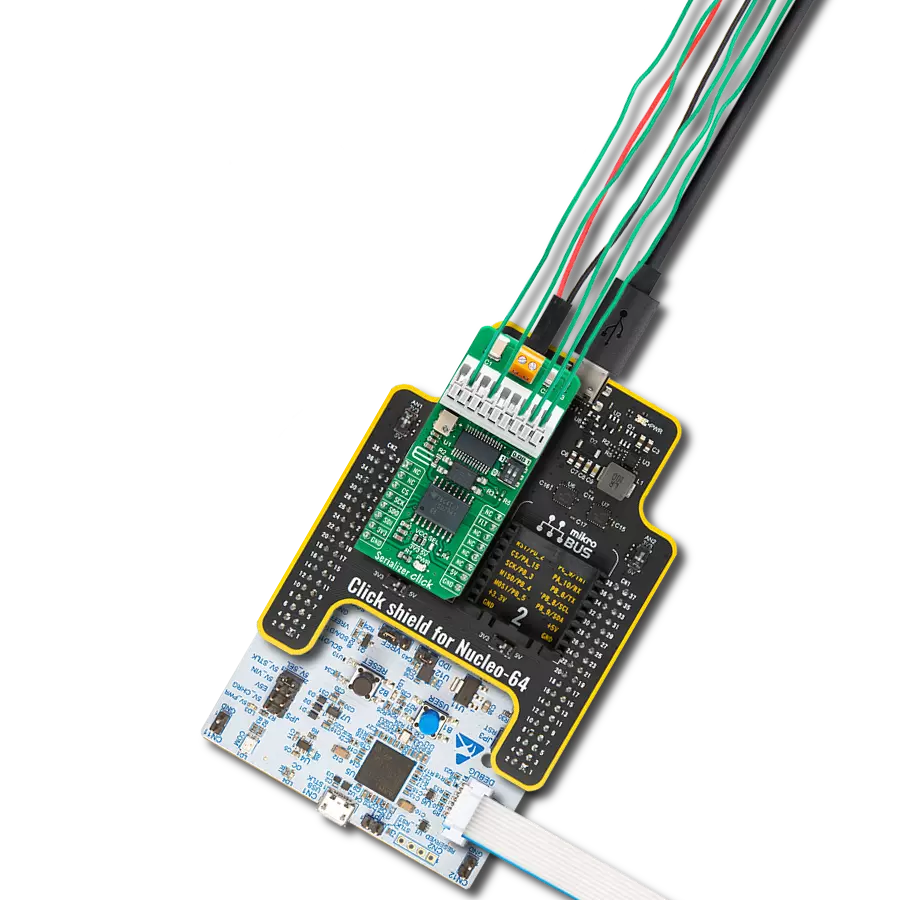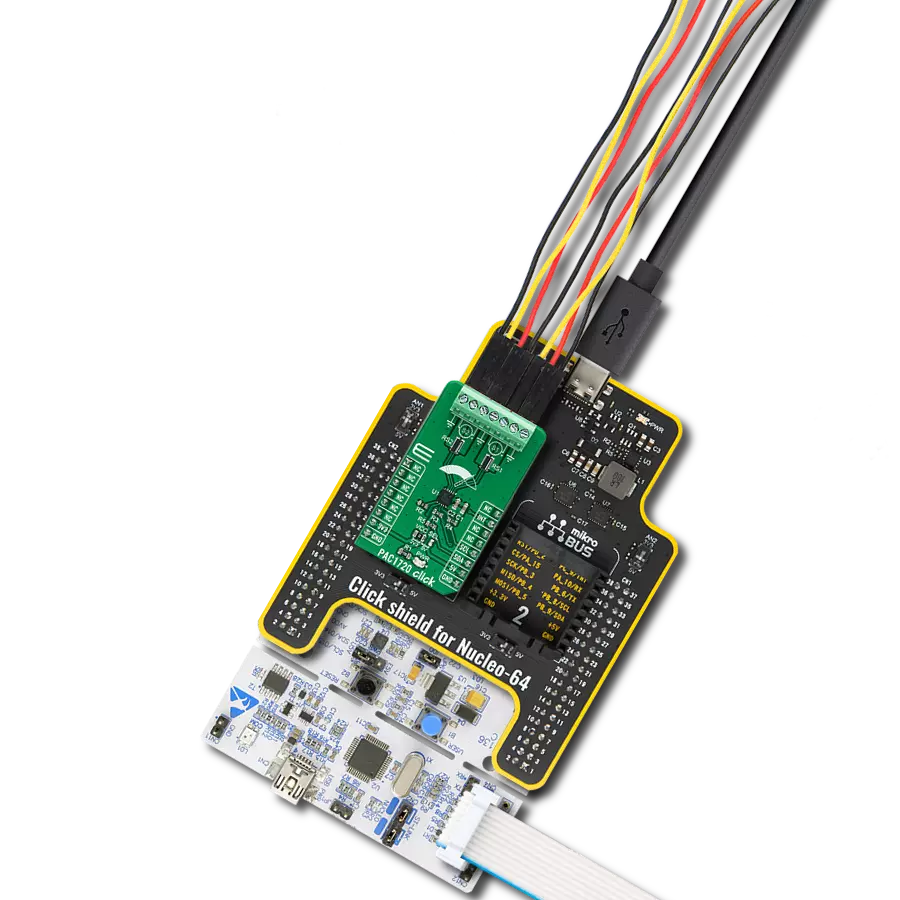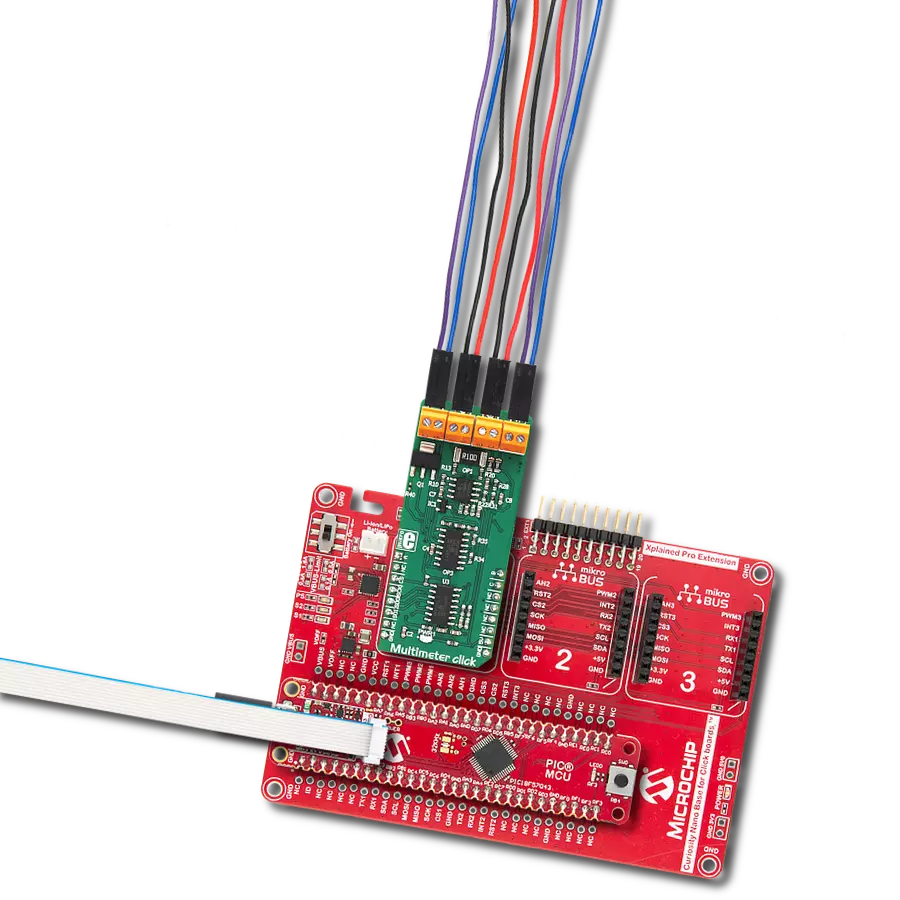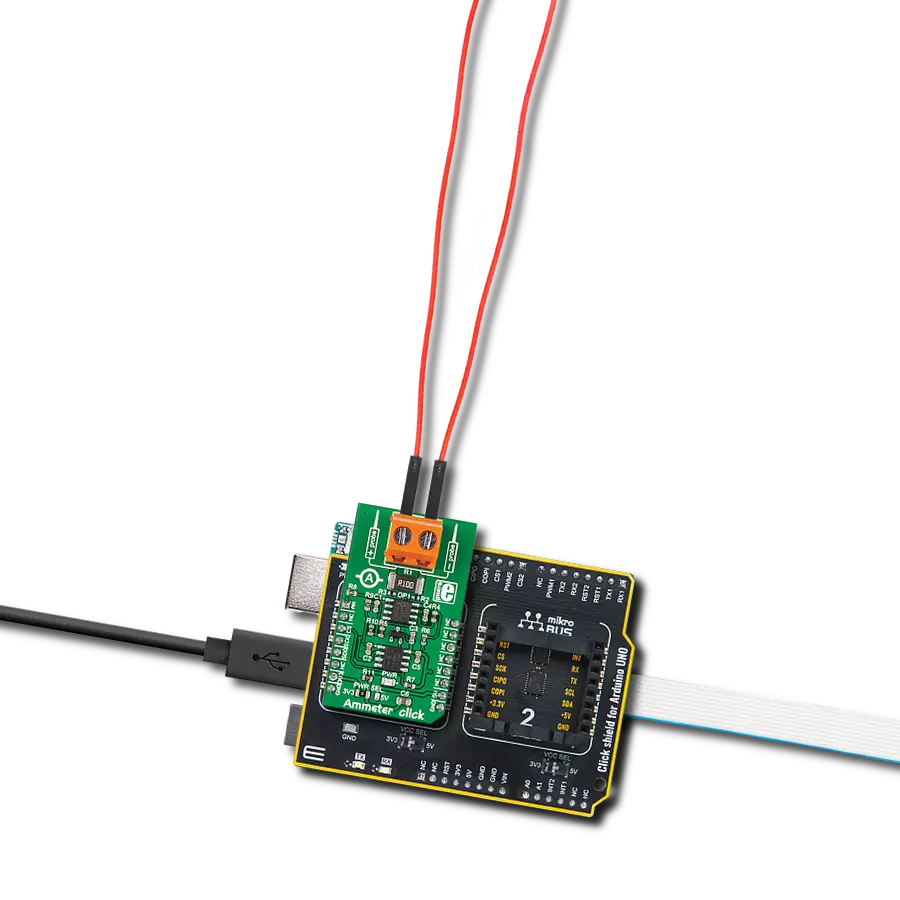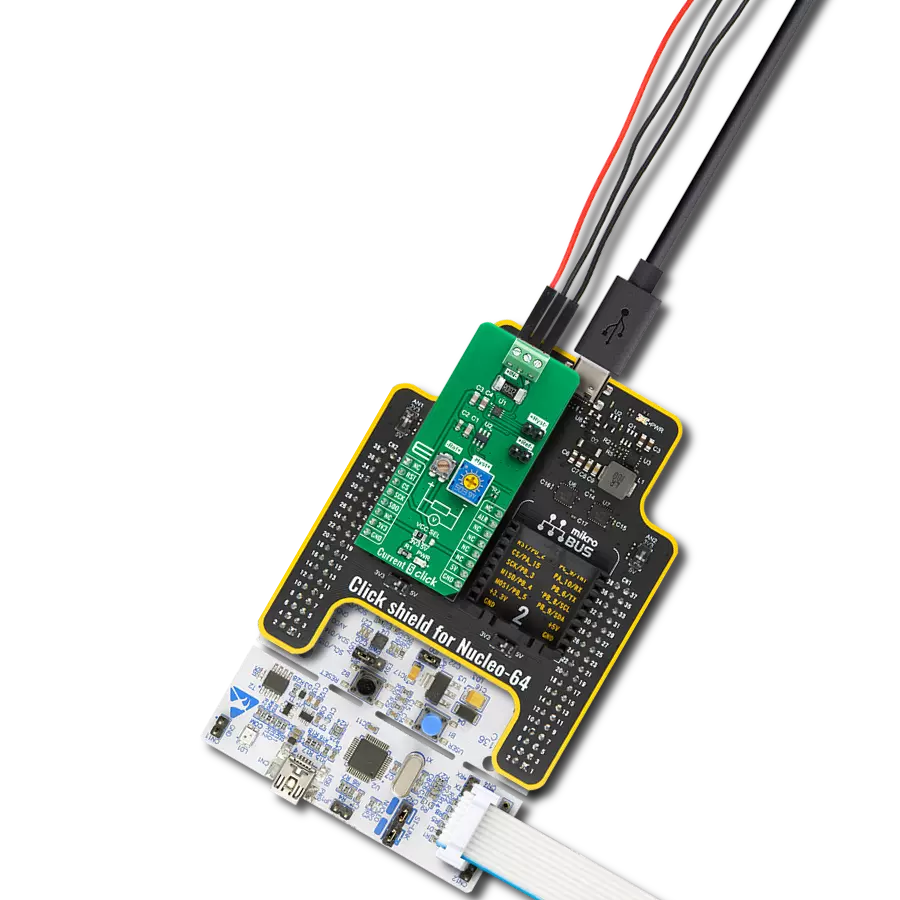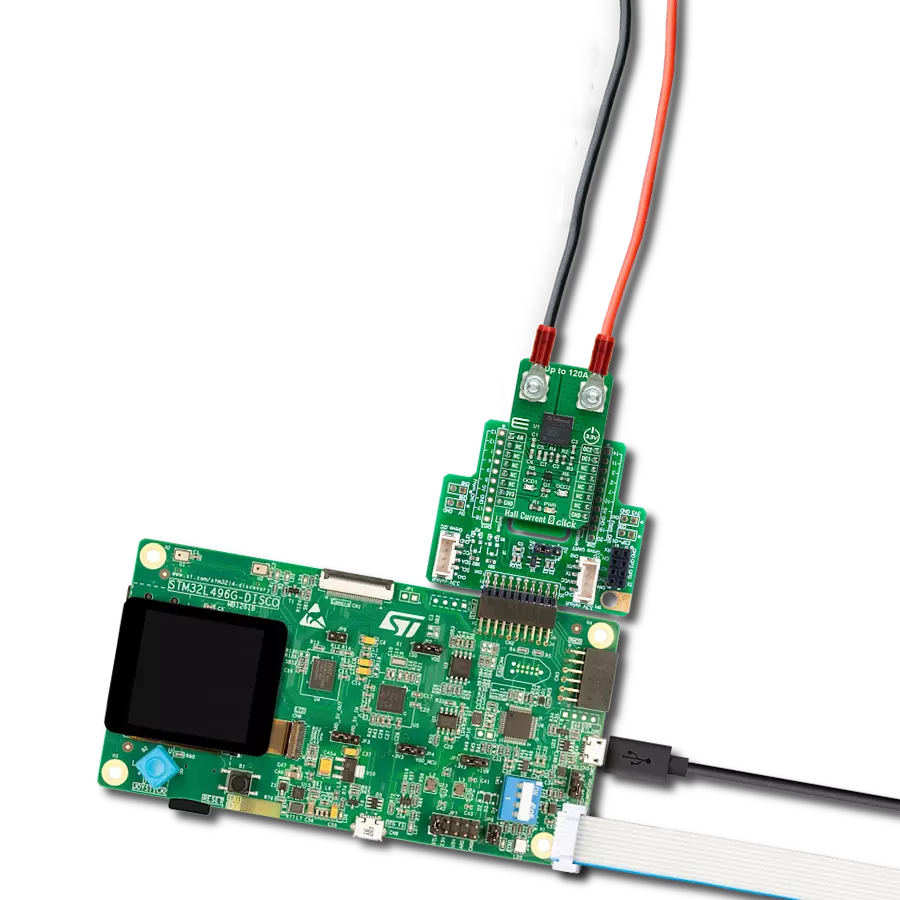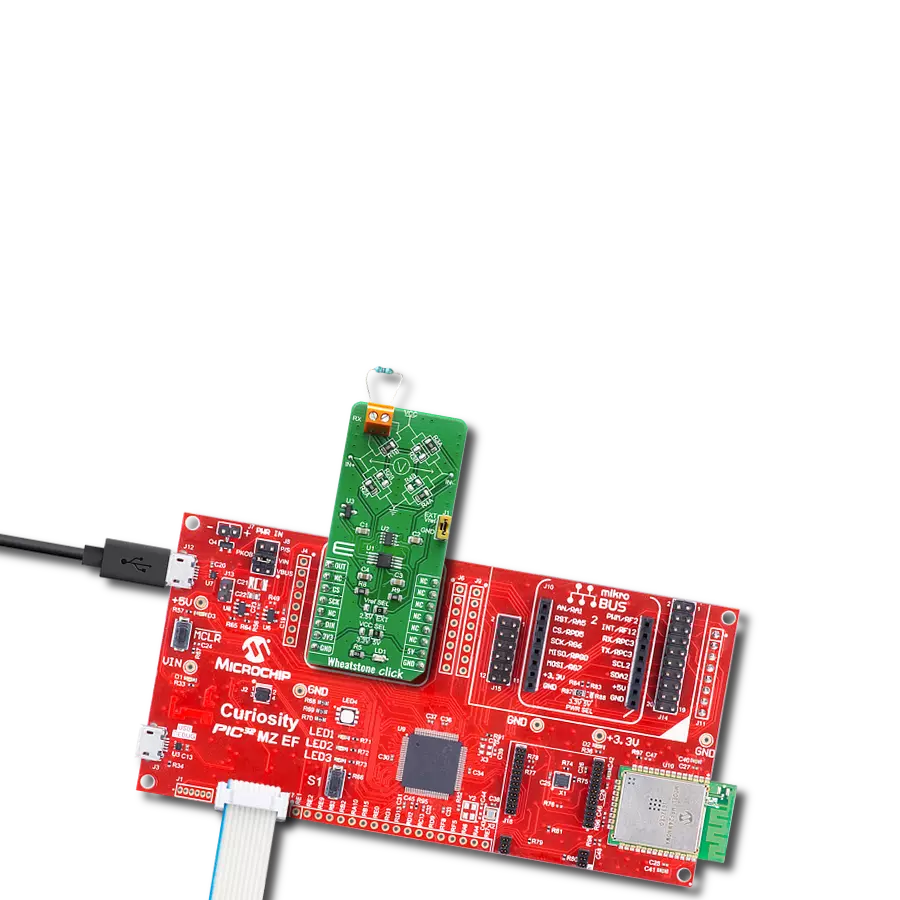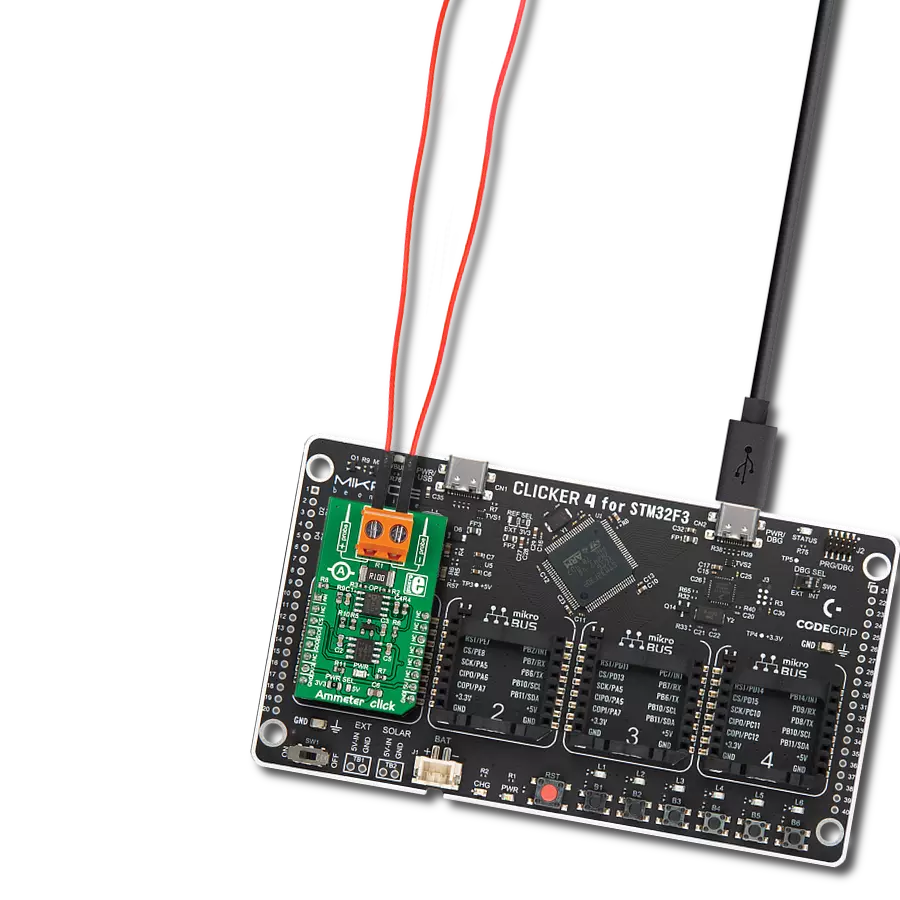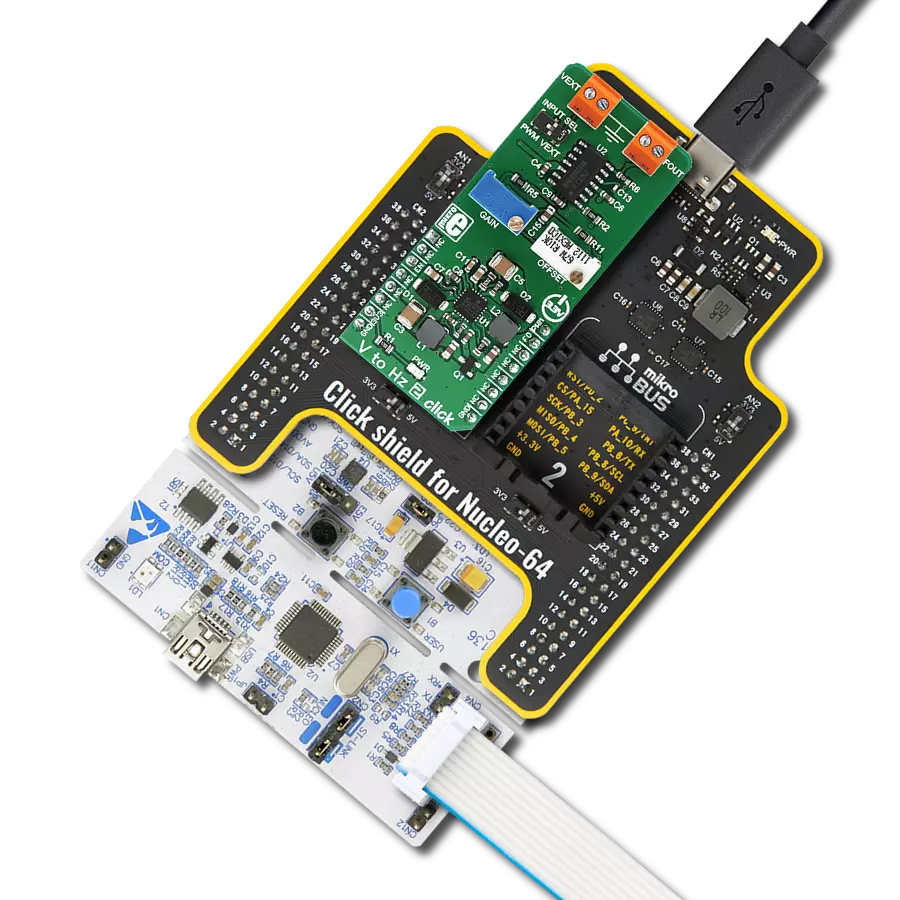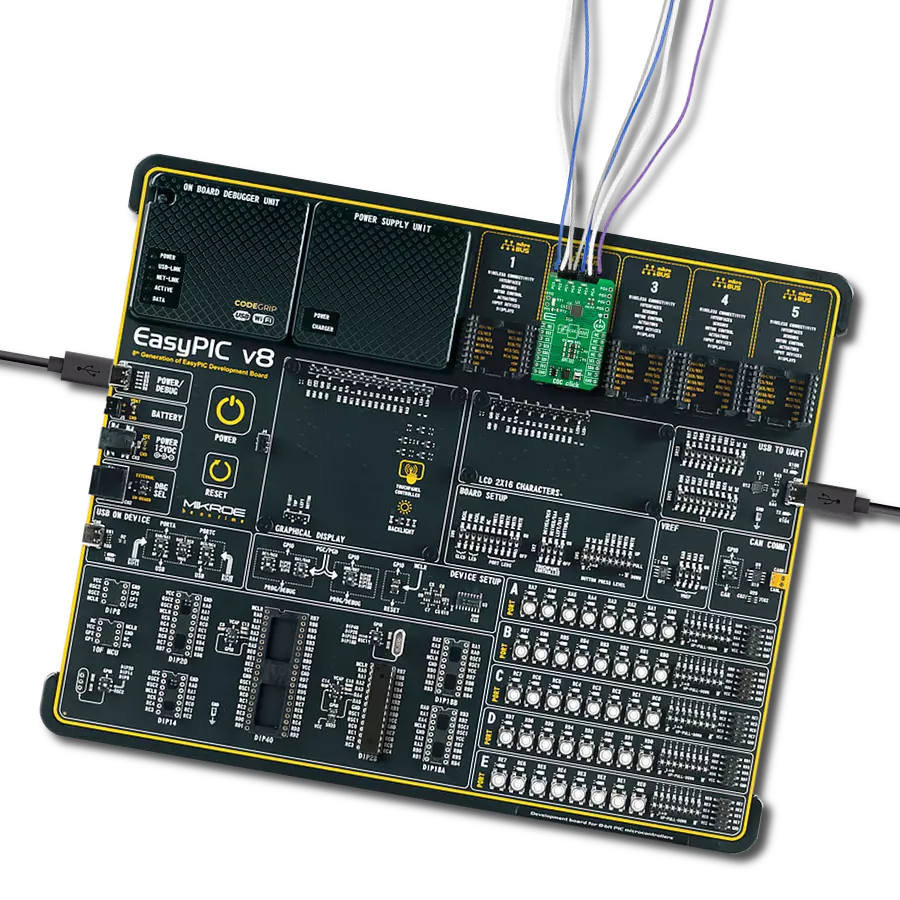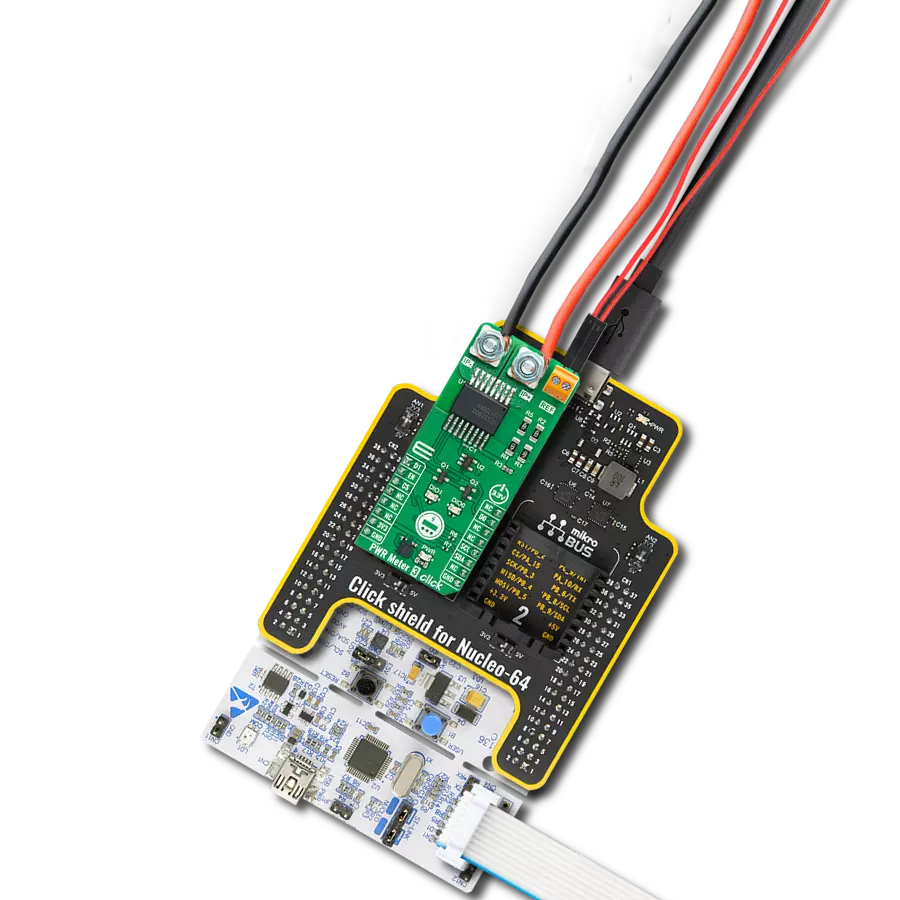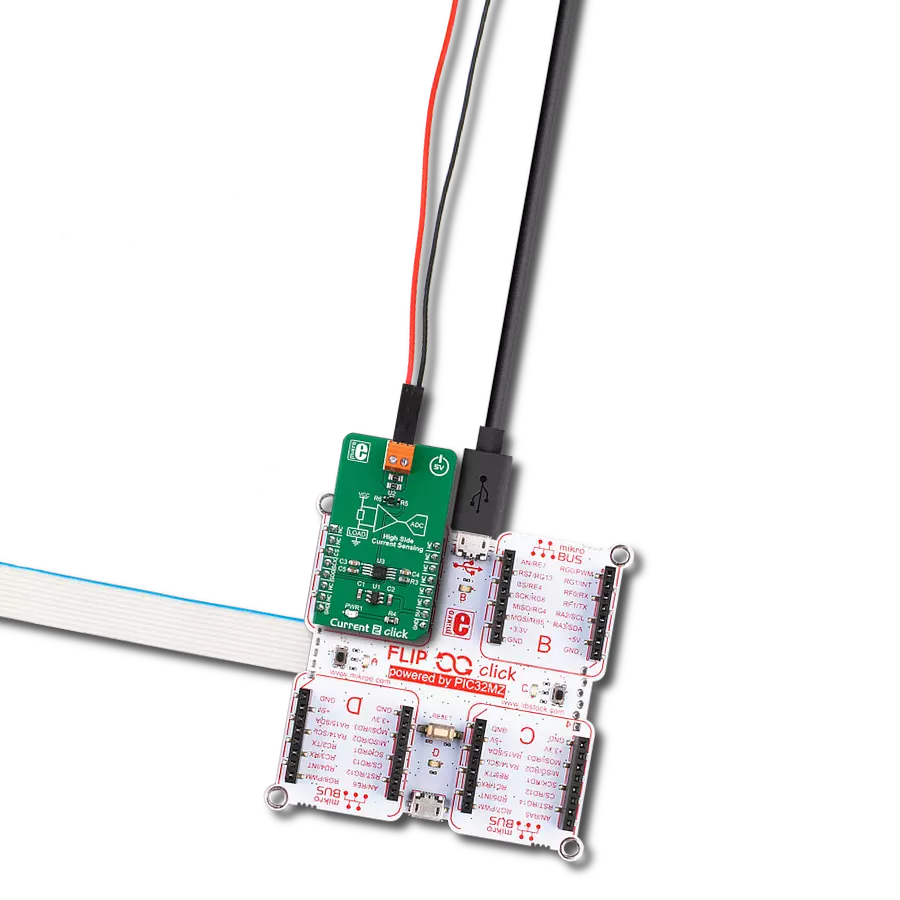Efficiently manage your energy resources with confidence using our DC power and energy monitoring solution, offering unparalleled accuracy and insights
A
A
Hardware Overview
How does it work?
PAC1934 Click is based on the PAC1934, a four-channel DC power/energy monitor from Microchip. The click is designed to run on either a 3.3V or 5V power supply. It communicates with the target microcontroller over an I2C interface. Four 4-Terminal current sense shunt resistors are connected to the current sense amplifier (in the chip). Electricity is brought to shunts via screw terminals. The middle screw connector is GND which can be used for bus voltage monitoring. This Click enables energy monitoring with
integration periods from 1ms up to 36 hours or longer. Bus voltage, sense resistor voltage, and accumulated proportional power are stored in registers for retrieval by the system master or Embedded Controller. The PAC1934 is a four-channel bi-directional high-side current-sensing device with precision voltage measurement capabilities, DSP for power calculation, and a power accumulator. It measures the voltage developed across an external sense resistor (VSENSE) to represent the high-side current of a
battery or voltage regulator. The PAC1932/3/4 also measures the SENSE1+ pin voltages (VBUS). This Click board™ can operate with either 3.3V or 5V logic voltage levels selected via the PWR SEL jumper. This way, both 3.3V and 5V capable MCUs can use the communication lines properly. Also, this Click board™ comes equipped with a library containing easy-to-use functions and an example code that can be used as a reference for further development.
Features overview
Development board
Curiosity PIC32 MZ EF development board is a fully integrated 32-bit development platform featuring the high-performance PIC32MZ EF Series (PIC32MZ2048EFM) that has a 2MB Flash, 512KB RAM, integrated FPU, Crypto accelerator, and excellent connectivity options. It includes an integrated programmer and debugger, requiring no additional hardware. Users can expand
functionality through MIKROE mikroBUS™ Click™ adapter boards, add Ethernet connectivity with the Microchip PHY daughter board, add WiFi connectivity capability using the Microchip expansions boards, and add audio input and output capability with Microchip audio daughter boards. These boards are fully integrated into PIC32’s powerful software framework, MPLAB Harmony,
which provides a flexible and modular interface to application development a rich set of inter-operable software stacks (TCP-IP, USB), and easy-to-use features. The Curiosity PIC32 MZ EF development board offers expansion capabilities making it an excellent choice for a rapid prototyping board in Connectivity, IOT, and general-purpose applications.
Microcontroller Overview
MCU Card / MCU
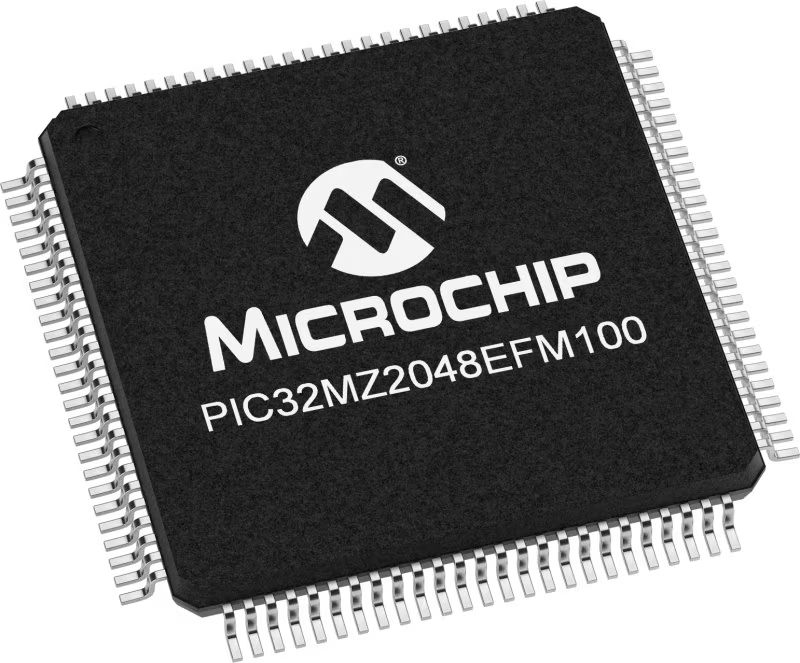
Architecture
PIC32
MCU Memory (KB)
2048
Silicon Vendor
Microchip
Pin count
100
RAM (Bytes)
524288
Used MCU Pins
mikroBUS™ mapper
Take a closer look
Click board™ Schematic

Step by step
Project assembly
Software Support
Library Description
This library contains API for PAC1934 Click driver.
Key functions:
pac1934_write_byte- Write one byte functionpac1934_read_byte- Read one byte functionpac1934_send_command- Send command function.
Open Source
Code example
The complete application code and a ready-to-use project are available through the NECTO Studio Package Manager for direct installation in the NECTO Studio. The application code can also be found on the MIKROE GitHub account.
/*!
* \file
* \brief Pac1934 Click example
*
* # Description
* This application measures the voltage.
*
* The demo application is composed of two sections :
*
* ## Application Init
* Initalizes device, enables the device and makes an initial log.
*
* ## Application Task
* This is an example that shows the most important
* functions that PAC1934 Click has, it mesures voltage, current, power and energy.
*
* \author MikroE Team
*
*/
// ------------------------------------------------------------------- INCLUDES
#include "board.h"
#include "log.h"
#include "pac1934.h"
// ------------------------------------------------------------------ VARIABLES
static pac1934_t pac1934;
static log_t logger;
// ------------------------------------------------------ APPLICATION FUNCTIONS
void application_init ( void )
{
log_cfg_t log_cfg;
pac1934_cfg_t cfg;
/**
* Logger initialization.
* Default baud rate: 115200
* Default log level: LOG_LEVEL_DEBUG
* @note If USB_UART_RX and USB_UART_TX
* are defined as HAL_PIN_NC, you will
* need to define them manually for log to work.
* See @b LOG_MAP_USB_UART macro definition for detailed explanation.
*/
LOG_MAP_USB_UART( log_cfg );
log_init( &logger, &log_cfg );
log_info( &logger, "---- Application Init ----" );
// Click initialization.
pac1934_cfg_setup( &cfg );
PAC1934_MAP_MIKROBUS( cfg, MIKROBUS_1 );
pac1934_init( &pac1934, &cfg );
}
void application_task ( void )
{
float read_value;
pac1934_dev_reset( &pac1934 );
pac1934_write_byte( &pac1934, PAC1934_CHANNEL_DIS, PAC1934_CHANNEL_DIS_ALL_CHA );
pac1934_write_byte( &pac1934, PAC1934_CTRL_REG, PAC1934_CTRL_SAMPLE_RATE_8 | PAC1934_CTRL_SINGLE_SHOT_MODE );
Delay_ms ( 100 );
pac1934_send_command( &pac1934, PAC1934_REFRESH_CMD );
read_value = pac1934_measure_voltage( &pac1934, 1 );
log_printf( &logger, "Voltage : %.2f V\r\n", read_value );
read_value = pac1934_measure_current( &pac1934, 1 );
log_printf( &logger, "Amperage : %.2f mA\r\n", read_value );
read_value = pac1934_measure_power( &pac1934, 1 );
log_printf( &logger, "Power : %.2f W\r\n", read_value );
read_value = pac1934_measure_energy( &pac1934, 1, 8 );
log_printf( &logger, "Energy : %.2f J \r\n", read_value );
log_printf( &logger, "--------------------- \r\n" );
Delay_ms ( 1000 );
}
int main ( void )
{
/* Do not remove this line or clock might not be set correctly. */
#ifdef PREINIT_SUPPORTED
preinit();
#endif
application_init( );
for ( ; ; )
{
application_task( );
}
return 0;
}
// ------------------------------------------------------------------------ END
Additional Support
Resources
Category:Measurements


















